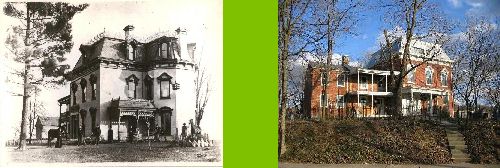Last Friday I sealed this liner at the base of the chimney and patched the smoke chamber where some mortar was missing leaving brick exposed. It was sealed by using a piece of backer board cut to rest on a ledge at the throat of the chimney. The dimensions were something like 12" X 15". An 8" diameter hole was cut into the center of the backer board and the chimney liner was inserted into this hole. Any gaps around the liner and the edges of the backer board were plugged with strips of ceramic blanket material.
I mixed up about 10 gallons of cement using 4 parts vermiculite to 1 part Portland cement. The first 5 gallons was quite wet since I needed it to make a seal around the base of the liner and the backer board. The second batch was more dry. These batches were poured down the chimney from the roof. The purpose of this initial dump of "cement" is to seal the liner. Subsequent dumps are going to be made that will insulate the liner from heat loss and add some structural integrity to the chimney since it will fill any gaps where the mortar has deteriorated. The subsequent dumps will be made later this week after the plug has cured a little. In all, I need about 24 cubic feet of this thermal cement which means that I will be making alot of trips to the roof this week!
After the water stopped dripping into the fireplace, I coated the backer board and ceramic blanket material with refractory mortar. I put it on with a narrow scraper then use a paint brush to cover the surface. I will need to apply a second coat later this week. Here is a picture looking up;

I need to place the other two liners down their chimneys. This will require some help because they have to be installed from above. I don't need help putting them down the chimneys. I need help getting them onto the roof! They are both going to be harder to plug too. I can't stand in the fireplaces and will likely have to tie a paint brush to a stick in order to apply the refractory mortar. Oh, I forgot to mention that I also have to rebuild 6.5' of the chimney around the liners. That is the sucky part because I have to haul about 170 bricks up three flights of stairs!

8 comments:
Why is the liner corrugated? Easier to handle and flexible enough to curve around offsets in the chimney?
How does it affect build up of dirt/dust/soot?
I love your blog, but you guys need to fix your template, it's bleeding over onto the green part of the page when I view it in Firefox!
Cheers,
- D. Greene, audendi.com
but you guys need to fix your template, it's bleeding over onto the green part of the page when I view it in Firefox!
Should be fine now. The text is a little more condensed but less taxing on the eyes.... I need to figure out how to widen the white space in the template.
Between bricks and cement, I'm tired. Are you using a cement mixer? Good luck!
Good Job!:
Metal chimney liners, usually of stainless steel or aluminum, are primarily used to upgrade and repair existing chimneys. These liner systems are U.L. tested and listed, and if properly installed and maintained are extremely safe and durable.
Thanks for the informative blog. It helped me a lot. I learned different specifications of chimneys.
Be sure to use the correct grade of liner too. 316 stainless steel for wood, gas and oil. 904 for coal. Aluminium is also suitable for gas and oil, but not woodburners.
Post a Comment